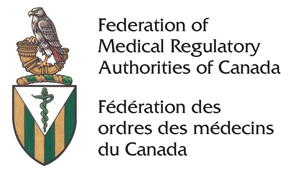View the following document in PDF format.
Download the PDF document | Télécharger le document en PDF
FMRAC Definition of Telemedicine
This Framework proposes recommendations and minimum regulatory standards to the members of the Federation of Medical Regulatory Authorities of Canada (FMRAC). It is intended to help inform the development of the medical regulatory authorities’ policies and guidance to physicians and promote pan-Canadian consistency. It is incumbent on each medical regulatory authority (MRA) to develop policy and approaches to ensure effective regulation.
Definitions
Telemedicine: a medical service provided remotely via information and communication technology.[1]
Remotely: without physical contact and does not necessarily involve long distances.
Preamble
Ethical, professional and legal obligations
The use of telemedicine does not alter the ethical, professional and legal obligations of physicians, including but not limited to:
Expectations of compliance with relevant provincial/territorial and federal legislation, as well as regulatory policies and guidance
The MRA expects that physicians who use telemedicine will comply with relevant legislation and current regulatory policies and guidance in the physician’s province/territory of licensure, as well as those in the jurisdiction where the patient is located, including but not limited to:
For physicians before they engage in telemedicine
For physicians during and after engaging in telemedicine
FMRAC recommends that, where feasible:
[1] Reference: Europe Economics. Regulatory Approaches to Telemedicine. Updated 18 May 2018.
Note: For the purpose of this Framework, includes medical services to patients as well as interprofessional and intraprofessional consultations (e.g., assessing, diagnosing, giving advice, teleradiology, etc.).
[2] This includes but is not limited to pharmaceutical, laboratory, diagnostic imaging or hospital discharge information, etc.
